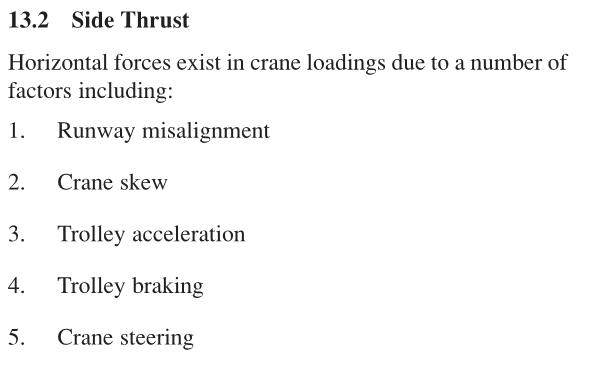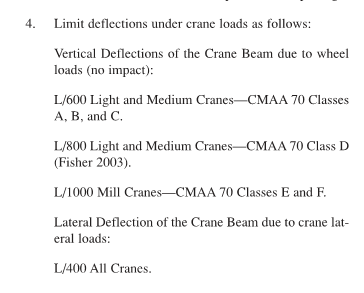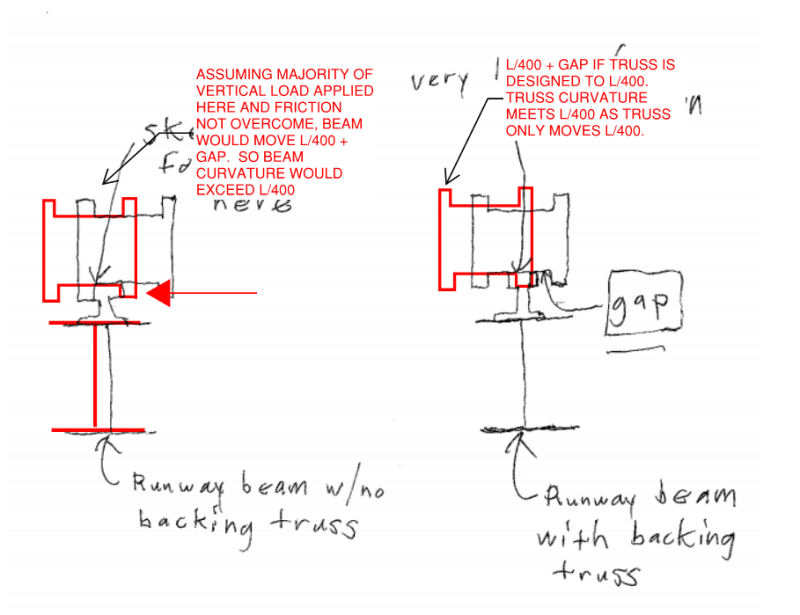To backup a little bit; it seems that OP has two main questions to ask here:
[ol 1]
[li]Does the structure deflection exceed the requirements in the applicable specifications (CMAA, etc.) when analyzed in a traditional fashion?[/li]
[li]If it does, can we justify that the serviceability of this crane as acceptable if we perform a more rigorous analysis?[/li]
[/ol]
For item (1) many engineers would likely not step outside the cut and dry boundaries of the spec for a more grey area. If OP is correct in his analysis then it appears that he cannot utilize the stiffness of the stronger rail without entering such a grey area.
But, if OP is willing to step into this grey area, here's how I believe you could justify this:
I agree with KootK that the appropriate analysis of side thrust would be CMAA's breakdown of the various side thrust forces. I would put forth that the overall goal of the lateral deflection criteria is to avoid extreme curvature of the rails such that you had excessive wear or binding of the end trucks. With that goal in mind, I believe we can indicate which of the CMAA loads would and would not be able to distribute load to the stiffer rail:
[ol 1]
[li]Runway misalignment lateral load inherently requires both end trucks to be engaged for a lateral force to be present. Thus, we could distribute this load to the rails based on stiffness.[/li]
[li]Crane skew is independent to each rail. Thus, we
can not distribute the skewing force based on stiffness.[/li]
[li]Trolley acceleration could load up only one rail depending on which wheel cheek was resting against the rail and which side of the bridge the trolley was on. Thus, we
can not distribute this force based on stiffness.[/li]
[li]Trolley braking is similar to acceleration. We
can not distribute this force based on stiffness.[/li]
[li]Crane steering is related to crane skewing and similarly we could not distribute this load to the rails based on stiffness.[/li]
[/ol]
If practical, I would run the calculation for these forces and distribute them to the rails based on the above. I would then see if I still violated the crane rail deflection criteria.
Here's a nice paper on free floating vs. fixed rails that's relevant to this discussion:
Short version is they conclude that adding rail guide rollers (as KootK mentioned way above) is an ideal solution and done often across the pond. I would put forth that adding rail guide rollers would be a suitable alternative if OP cannot meet the lateral deflection criteria.
Ian Riley, PE, SE
Professional Engineer (ME, NH, VT, CT, MA, FL) Structural Engineer (IL, HI)

![[smile] [smile] [smile]](/data/assets/smilies/smile.gif) .)
.)

